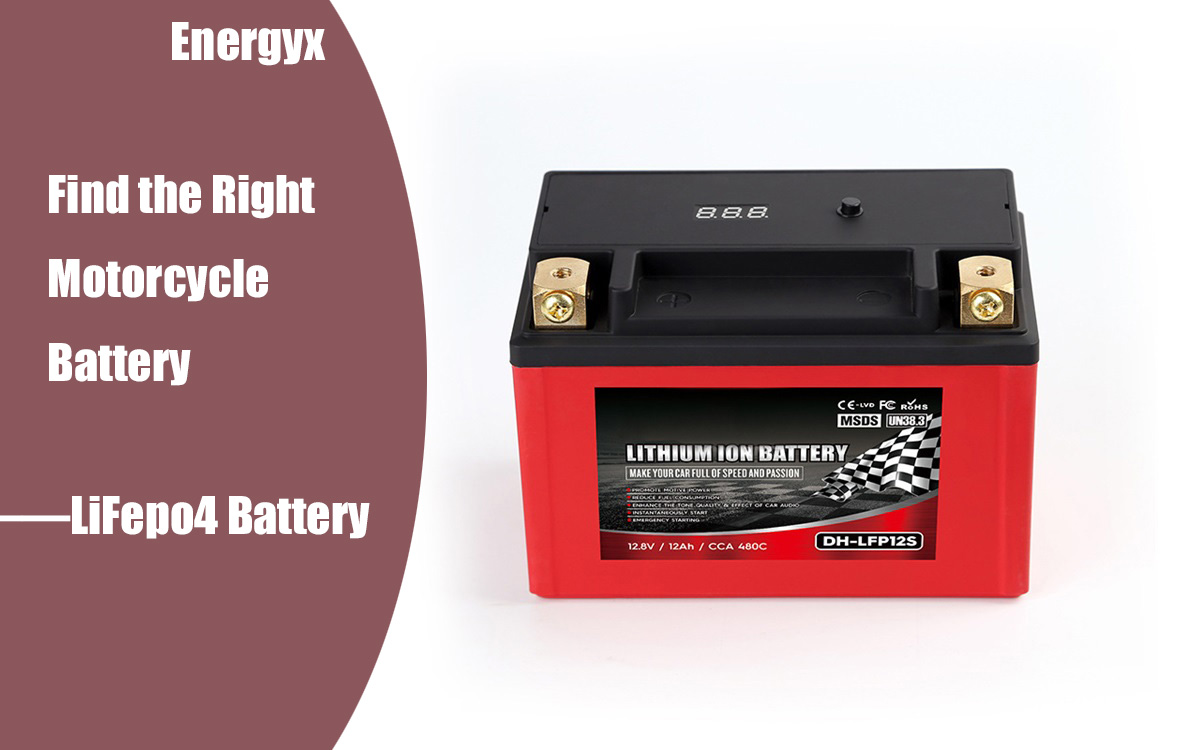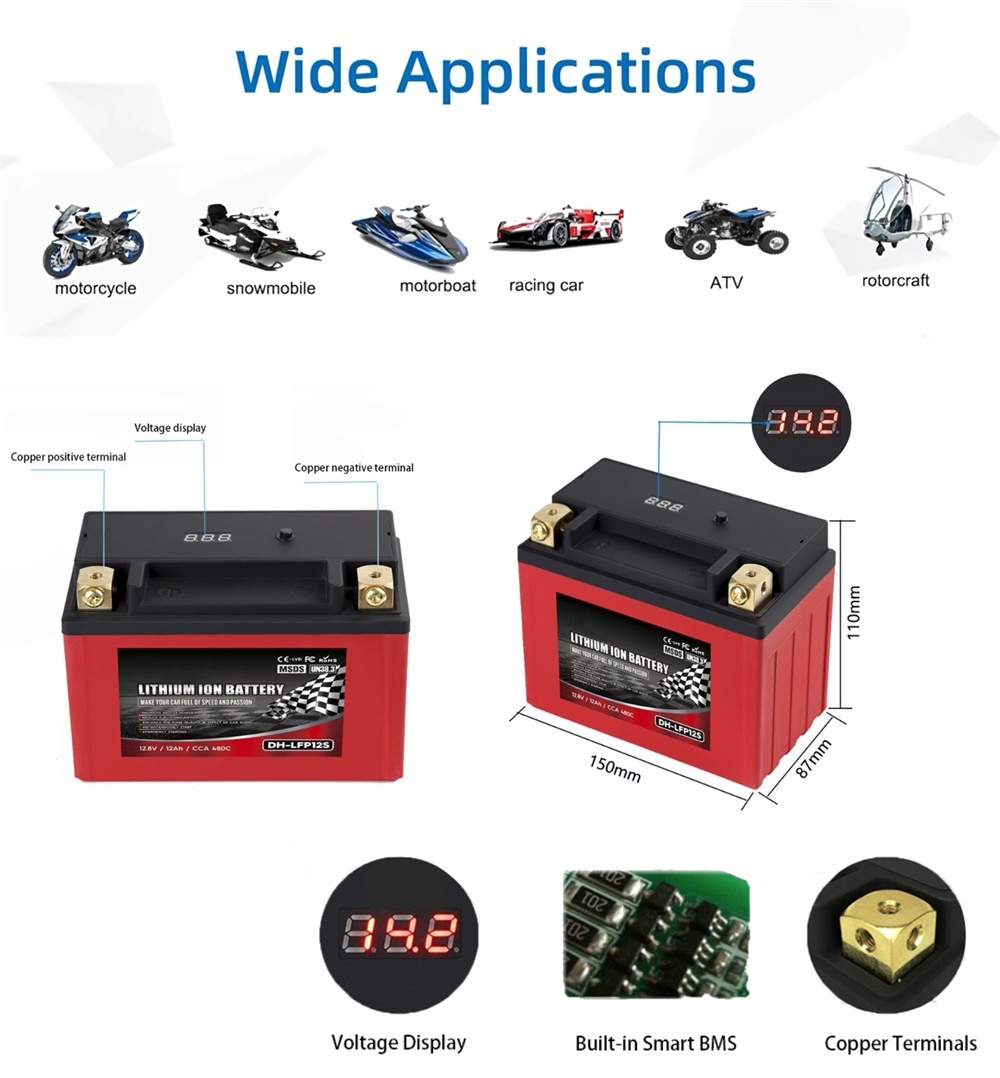Find the Right Motorcycle Battery: What Every Rider Should Know

Motorcycles play an important role in everyday riding, or in long-distance expeditions. The motorcycle battery is related to the performance and safety of the entire motorcycle.
In this guide, we break down the key factors to consider when choosing the right battery for you to ride with peace of mind.
Why the Right Motorcycle Battery Matters
A reliable motorcycle battery does more than start your engine—it powers your lights, horn, ignition system, and even onboard electronics. A low-quality or mismatched battery can lead to poor performance, frequent stalls, and unexpected breakdowns. That’s why choosing the right battery isn’t just a good idea—it’s essential.
Key factors riders should consider in Motorcycle Battery
Here’s what every rider should evaluate before buying a motorcycle battery:
1. Compatibility with Your Bike
Make sure the battery is designed for your specific make and model. Check your owner's manual for the recommended size, voltage, and terminal layout to avoid installation issues.
2. Battery Type: Maintenance-Free vs. Conventional
· Maintenance-Free (AGM, Gel, Lithium): Sealed, leak-proof, and easier to manage. Ideal for riders who want low-maintenance reliability.
· Conventional (Flooded): More affordable, but needs regular water level checks and terminal cleaning.
· Pro Tip: For modern bikes or extreme weather, go with a sealed AGM or lithium battery for better performance and lifespan.
3. Capacity & Cold Cranking Amps (CCA)
· Capacity (Ah): Tells you how long the battery can deliver power. Higher capacity = longer reliability.
· CCA: Measures the battery’s ability to start the engine in cold conditions. If you ride year-round, a higher CCA is a must.
4. Brand Reputation
Stick with trusted names in the industry—brands with a proven track record offer better quality, longer lifespan, and reliable customer support. Read reviews or ask fellow riders for recommendations.
5. Warranty & Support
A solid warranty means the manufacturer stands behind their product. Look for at least a 1-year warranty, ideally more.
6. Durability for the Road
Your battery should handle vibration, heat, and rough terrain. Look for:
· Vibration resistance
· Heat tolerance
· Waterproof casing (for off-road or all-weather riding)
7. Ease of Maintenance
If you’re not into regular upkeep, opt for a sealed, maintenance-free battery. Riders who enjoy hands-on bike care might be fine with conventional options.
Featured Pick: LFP12S 12Ah 12.8V 480CCA LiFePO4 Motorcycle Battery
Looking for maximum starting power, ultra-lightweight design, and long-term reliability? The LFP12S 12.8V 480CCA LiFePO4 Motorcycle Battery from Energy-X is an excellent choice for serious riders.
With 480 Cold Cranking Amps (CCA), this battery delivers powerful engine starts—even in cold weather. Its LiFePO4 chemistry ensures enhanced safety, a longer cycle life (up to 2,000+ cycles), and up to 75% less weight than traditional lead-acid batteries—making it perfect for high-performance motorcycles, ATVs, and scooters.
Key Benefits:
· High CCA for fast, reliable starts
· Maintenance-free and eco-friendly
· Vibration and shock-resistant
· Overcharge & short-circuit protection
· Compact and lightweight for better bike handling
Whether you're commuting daily or touring across states, the LFP12S offers next-level performance and peace of mind with zero maintenance required.
👉 View Full Specs and Purchase Here »
Final Thoughts
Choosing the right motorcycle battery doesn’t have to be complicated. Focus on compatibility, power needs, riding conditions, and your maintenance preferences. With the right battery, you’ll enjoy smoother starts, stronger performance, and fewer roadside surprises.
Ready to upgrade? Choose wisely—and ride confidently.
FAQ: Motorcycle Battery Care & Lifespan
How can I make my motorcycle battery last longer?
Proper battery maintenance—like keeping terminals clean, charging regularly, storing in a cool, dry place, and using a trickle charger during off-season—can significantly extend its lifespan.
How long does a motorcycle battery last?
Most motorcycle batteries last 2 to 5 years, and with regular use and proper care, you can extend their lifespan and avoid issues like hard starts or dim lights.
Should I disconnect my motorcycle battery during winter?
For winter storage, disconnect your battery—or better yet, use a trickle charger to prevent discharge and extend its life.
What’s the difference between lead-acid and lithium motorcycle batteries?
Lead-acid batteries are affordable but heavier and need more maintenance, while lithium batteries are lighter, longer-lasting, and maintenance-free, making them ideal for performance bikes.


